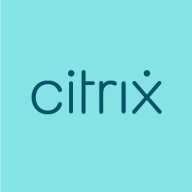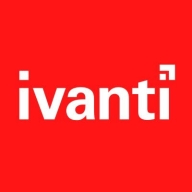


Citrix Endpoint Management and Ivanti Endpoint Manager compete in the endpoint management solutions category. Based on data comparisons, Citrix appears to have the upper hand in pricing and customer service, while Ivanti leads in feature offerings.
Features: Citrix Endpoint Management offers robust mobile device management, enhanced security protocols, and seamless integration with Citrix products. Ivanti Endpoint Manager provides comprehensive asset management, automated patch management, and flexible policy enforcement.
Ease of Deployment and Customer Service: Citrix Endpoint Management facilitates quicker adoption with a straightforward deployment process and extensive customer support resources. Ivanti Endpoint Manager, despite detailed deployment options, may require more technical expertise.
Pricing and ROI: Citrix Endpoint Management is usually more affordable, offering a quicker ROI for those seeking basic functionality. Ivanti Endpoint Manager, though higher in price, delivers long-term ROI through its comprehensive features.
Everything we've gained from it makes my job easier day after day, and I see value in it as an engineer.
Microsoft Intune not only saves costs by reducing the number of personnel needed but also offers a comprehensive solution for managing laptops, applications, security, individual access, and enrollment.
Importantly, when someone leaves the company, it helps protect document access on their devices.
After implementing Citrix Endpoint Management, there is a return on investment for my customers because we provide three services: first is the license, where we got margin; second, deployment service, which typically has two types—one where Citrix will do the deployment and the other where a partner should do it, and we deploy this solution for about 80% of the customers in India; third is after deployment support.
When a support ticket is submitted, it directly reaches someone with Intune support expertise.
When I contacted Microsoft, they had the same expertise, if not more, which is phenomenal because I felt heard and my problem was solved.
Sometimes, the support provided is excellent, and the representative is knowledgeable, while other times, the service needs improvement.
Technical support for Citrix Endpoint Management is not satisfactory.
This product requires some mature understanding, so sometimes they can handle small problems, but for major or architecture-related issues, their L3 or our L3 engineer helps them understand the problem.
The support from Citrix has been satisfactory.
It's always better to jump on a call and share screen, which they are willing to do rather than just going through a list of troubleshooting steps.
Their technical support is generally good in terms of quality and speed.
They provided detailed information that helped me convince the security team to approve the necessary port openings.
The scalability of Microsoft Intune is ten out of ten.
Ideally, we want to automatically segregate devices based on user properties like primary use, but currently, dynamic groups seem limited to device properties.
It supports organizations with 200 endpoints and those with more than 15,000 endpoints.
My colleagues using iOS have faced issues, such as logging problems requiring frequent password entries.
I rate the scalability of Ivanti Endpoint Manager around seven to eight because it offers options to manage the devices effectively, requiring only the addition of licenses.
Ivanti Endpoint Manager is indeed scalable.
We have not experienced downtime, bugs, or glitches.
It appears Microsoft Intune undergoes changes without informing customers.
Microsoft Intune has been very stable.
The solution's stability is below expectations.
The solution is stable, though there are occasional restarts, which are not critical.
Regarding stability and reliability, I have never seen the server go down or any functionality taken offline.
Due to the large number of devices in our environment, when we load the console for the first time, it takes a while to update the database.
For stability, once you get the system up and running, it's consistently stable without any lagging, crashing, or downtime.
Features like unlocking devices sometimes fail, and the support offered for other operating systems is insufficient.
There are communication issues, so you might start working with a feature without knowing if it will be deprecated six months from now.
Many third-party companies offer single-pane-of-glass reporting that shows you what your update environment looks like, how your patch is doing, application status, etc., but Intune's reporting is not intuitive.
The main issue is the change from perpetual licenses to subscription-based ones, which has increased our costs significantly.
With AI being present, they may increase some AI-related features in the future.
The units are not updating the operating system as specified in the policy.
It lacks features like easy connection to remote computers and has a complicated software deployment process.
When we offboard a user, sending the wipe command or lock command is slightly slower than Workspace ONE.
The area that could be improved within Ivanti Endpoint Manager is integration, particularly with tools such as Splunk or potentially ServiceNow.
Introductory professional services, like a fast-track service, were included with our E5 membership, and there have been no additional costs.
The Intune suite and add-ons, such as batch management and remote help, are costly.
It costs approximately forty euros per user per month.
The switch to subscription-based licensing has made it much more expensive.
For this client, the solution has been quite cheap.
The setup cost pricing for Citrix Endpoint Management varies; I can say $3,000 per user license for setup.
The transition to a Software-as-a-Service model led to significant price increases without corresponding enhancements in the platform.
Ivanti Endpoint Manager charges a flat fee for the implementation and product purchase, followed by yearly maintenance
Intune excels in configuration and compliance management for Windows 10, ensuring devices receive timely updates and adhere to organizational standards.
Dynamic groups allow us to set conditions for automatic membership, eliminating the need for user intervention or manual review and ensuring a seamless workflow.
Windows Autopatch is the most valuable because it removes the burden of patch management.
We have found the ability to manage user accounts on shared devices valuable as it reduces the need for multiple licenses, which saves costs.
The change to a subscription-based model has removed the financial benefit we previously had.
It provided essential features needed for our operations, including endpoint management and remote control.
The most valuable feature of the Ivanti Endpoint Manager is the Windows update patching.
The patch is very impressive, and the patching part of Ivanti Endpoint Manager is much easier compared to InTune.
| Product | Market Share (%) |
|---|---|
| Microsoft Intune | 32.6% |
| Ivanti Endpoint Manager | 2.7% |
| Citrix Endpoint Management | 2.2% |
| Other | 62.49999999999999% |



| Company Size | Count |
|---|---|
| Small Business | 116 |
| Midsize Enterprise | 46 |
| Large Enterprise | 152 |
| Company Size | Count |
|---|---|
| Small Business | 6 |
| Midsize Enterprise | 3 |
| Large Enterprise | 5 |
| Company Size | Count |
|---|---|
| Small Business | 3 |
| Midsize Enterprise | 2 |
| Large Enterprise | 6 |
Microsoft Intune provides centralized management of mobile devices and applications, ensuring security, compliance, and productivity through integration with Microsoft services like Microsoft 365 and Azure Active Directory.
Organizations use Intune for managing mobile devices and applications, enhancing security and compliance across platforms. With features like single sign-on, conditional access, and zero-touch deployment via Autopilot, it facilitates efficient operations. Intune's scalability, easy enrollment, and capabilities such as remote wipe support diverse device management, offering robust data protection and efficient operation. Despite its features, improvement areas include reporting, compatibility with non-Microsoft devices, and better support for macOS and Linux devices.
What are the key features of Microsoft Intune?
What benefits should users look for in reviews?
In industries such as finance, healthcare, and education, Microsoft Intune is implemented to ensure secure and compliant device management. Companies leverage its capabilities to deploy security policies and manage both corporate-owned and BYOD environments, facilitating a unified approach to data protection and compliance.
XenMobile is a comprehensive solution to manage mobile apps, data and devices, available both on-premises and in the cloud. Users have single-click access to all of their apps from a unified corporate app store and IT can easily configure, secure and support mobile devices. With XenMobile technology, IT can meet their compliance and control needs while giving users the freedom to experience work and life their way.
Ivanti's All-in-One Endpoint Management solution offers a seamless and comprehensive approach to managing user profiles and all client devices, spanning Windows, macOS, Linux, Chrome OS, and even IoT. With Day Zero support, you can ensure uninterrupted device management. Ivanti provides two key solutions to enhance your organizational operations: Modern Device Management through Ivanti Neurons for UEM, offering a unified view to efficiently manage and secure all devices, and Digital Employee Experience with Ivanti Neurons for Digital Experience, proactively improving productivity, security, and employee retention. This platform also facilitates OS provisioning, software distribution, Mac management, and efficient remote control, reducing resource allocation and enhancing user profile management, all complemented by intuitive dashboards and reporting capabilities. Elevate your endpoint management with Ivanti's comprehensive solution.
We monitor all Unified Endpoint Management (UEM) reviews to prevent fraudulent reviews and keep review quality high. We do not post reviews by company employees or direct competitors. We validate each review for authenticity via cross-reference with LinkedIn, and personal follow-up with the reviewer when necessary.